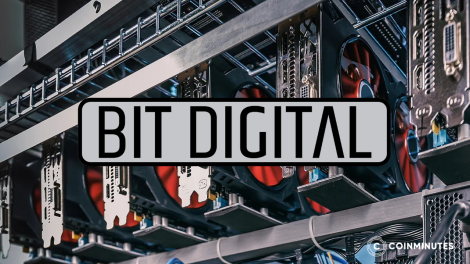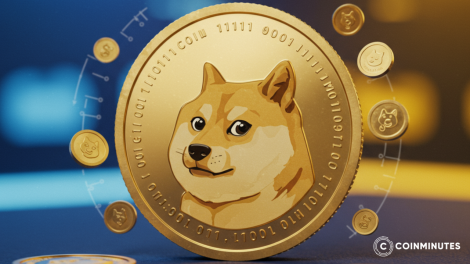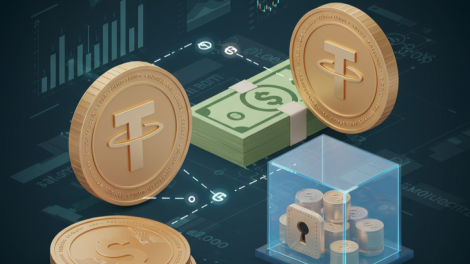What is Bitcoin Address? Understanding How It Works, Types, and How to Create Your Own

You’ve got a wallet. Maybe it’s an app on your phone, a program on your computer, or a little gadget that looks like a USB stick. When you want someone to send you some Bitcoin, you can't just give them your name. You need to give them an address. A Bitcoin address. It’s a string of 26 to 35 alphanumeric characters. That string of gibberish is a destination. A single, unique endpoint on the vast, global Bitcoin network where value can be sent. Let's explore it together with CoinMinutes.
What is a Bitcoin Address?
A Bitcoin address is neither your account nor your identity, but rather a one-time-use letterbox for receiving funds. The whole system is built on a pair of cryptographic keys: a private key and a public key. The private key is your secret—the one thing that lets you spend your Bitcoin. The public key is derived from that secret key. And the Bitcoin address is, in turn, derived from that public key.

Think of it like this:
-
The Private Key is the master key to your safe. Secret. Guard it with your life.
-
The Public Key is a specific safe that your master key can open.
-
The Bitcoin Address is the address of the building where the safe is located.
You can hand out the building's address to anyone. Couriers (people sending you Bitcoin) can use it to make deliveries. But only someone with the master key—your private key—can actually open the safe and take what's inside. The address itself is just a pointer, a public reference. It holds no power. It contains no secret information. You could plaster your Bitcoin address on a billboard in Times Square and your funds would be perfectly safe, as long as your private key remains a secret. The key is what matters. The address is just where the party's at.
How Bitcoin Addresses Work
So how does this string of gibberish get made? You don't just make it up. It’s not like picking a username for some new social media platform. It’s born from a cryptographic process, a one-way street of mathematical transformation that ensures security. It’s a bit of digital alchemy.
The process goes like this:
-
It Starts with a Secret: Everything begins with your private key. This is a 256-bit random number that your wallet software generates. This is your ultimate secret.
-
The Public Key is Born: Using a type of cryptography known as Elliptic Curve Cryptography (ECC), your wallet takes the private key and derives a public key from it. This is a mathematical function that's easy to do in one direction (private key to public key) but computationally impossible to do in reverse. You cannot figure out the private key by looking at the public key. This one-way nature is fundamental to the security of the whole system.
-
Hashing for Anonymity and Length: The public key is then put through one or more cryptographic hashing functions, typically SHA-256 and RIPEMD-160. A hash function takes an input of any size and spits out a fixed-size string of characters. It’s another one-way street—you can't reverse the hash to get the original public key. This hashing process adds another layer of security and also shortens the public key to a more manageable size.
-
Adding a Version Prefix and Checksum: The resulting hash is then taken, and a "version byte" is added to the front. This version byte indicates what type of address it is. Then, a "checksum" is created and appended to the end. The checksum is a short string of characters derived from the rest of the address data. Its purpose is to act as a typo-checker. If you mistype even a single character of a Bitcoin address, the checksum will no longer be valid and any decent wallet software will reject it.
-
Base58Check Encoding: Finally, this whole string of data is encoded using a method called Base58Check. This is what turns the raw binary data into the familiar alphanumeric string of a Bitcoin address. It uses 58 characters.
The end result is your Bitcoin address. A publicly shareable identifier, born from a secret key, passed through a series of one-way mathematical functions, and equipped with a built-in typo detector. It's a clever piece of engineering, designed for a system where there are no do-overs.
A mini-story from an user of CoinMinutes: I remember my first time receiving Bitcoin. I was nervous about sharing my address, thinking someone might "hack" it. A mentor explained the public/private key relationship to me. He said, "Sharing your Bitcoin address is like telling someone your home address so they can send you a package. They still don't have the key to get inside your house." That simple analogy stuck with me and perfectly captures the security of the system.
Types of Bitcoin Address
Not all Bitcoin addresses are created equal. Just like cars, they’ve gone through a few model changes over the years. Upgrades to the Bitcoin protocol have introduced new address formats, each with its own set of features, benefits, and quirks. You can still send Bitcoin between all of them, but knowing the difference can save you money on fees and give you access to newer features. You can usually tell the type just by looking at the first character of the address.
Legacy Addresses (P2PKH)
These are the originals, the classic model, the old workhorse. Legacy addresses, also known as Pay-to-Public-Key-Hash (P2PKH) addresses, are the ones that have been around since the beginning. They always start with the number 1. For example: 1BvBMSEYstWetqTFn5Au4m4GFg7xJaNVN2.

Legacy addresses are a direct hash of a public key. When you want to spend Bitcoin sent to this address, you must provide the public key and a digital signature created by the corresponding private key. Legacy addresses are universally supported by every wallet, exchange, and service in the Bitcoin ecosystem, making them the most compatible format.
Transactions sent from Legacy addresses take up more space in a block and, as a result, tend to have higher transaction fees compared to newer formats. They are also not case-insensitive, which can make them slightly more annoying to type out manually, though you should never be doing that anyway.
SegWit Addresses
SegWit (Segregated Witness) was a major upgrade to the Bitcoin protocol activated in 2017. It introduced a new way to structure transactions, which in turn led to new address formats that offer better efficiency.
-
Nested SegWit (P2SH) Addresses: This was the first type of SegWit address, designed to be backward-compatible with older systems that didn't recognize the newest format. It usually starts with the number 3. For example: 3J98t1WpEZ73CNmQviecrnyiWrnqRhWNLy.
Nested SegWit addresses are technically Pay-to-Script-Hash (P2SH) addresses. They hide the SegWit transaction logic within a script that older wallets can understand. This allowed for a smoother transition to SegWit. They offer some fee savings.
Addresses starting with "3" can also be for multi-signature wallets, so you can't be 100% sure it's a SegWit address just by looking at it, but it's a common use.

-
Native SegWit (Bech32) Addresses: This is the "true" SegWit address format, offering the full benefits of the upgrade. They start with bc1. For example: bc1qar0srrr7xfkvy5l643lydnw9re59gtzzwf5mdq.
These addresses are specifically designed for SegWit transactions. They are more efficient, leading to the lowest possible transaction fees. They are also all lowercase, which improves readability and reduces errors. The checksum algorithm is also more robust. If you trade frequently, your best option is a Native SegWit address.
In the early days, not all wallets and services supported sending to Bech32 addresses, but as of 2025, adoption is widespread and it's generally considered the standard address format to use.

Taproot Addresses (Bech32m)
Taproot was the next major Bitcoin upgrade after SegWit, activated in November 2021. It introduced a new, even more advanced address type. The address starts with bc1p. For example: bc1p8dencd36e2g4deye79z94d2d829z90q5yqjrc7.

Taproot addresses (using a modified Bech32m encoding) offer significant benefits for privacy and smart contract capabilities. Transactions from Taproot addresses can look the same on the blockchain whether they are a simple single-signature payment or a complex multi-signature transaction or smart contract execution. This enhances the privacy of all users. They also make more complex scripts more efficient and cheaper to execute.
These addresses have enhanced privacy, more efficient use of block space for complex transactions, and open the door for more advanced smart contract functionality on Bitcoin.
Taproot is yet to be adopted by all wallets and services, though it is growing steadily as the ecosystem continues to upgrade. For a deep dive on the latest adoption stats, a dedicated crypto data site or a news outlet like CoinMinutes would be the place to look.
A developer in our CoinMinutes community put it best: "Using Taproot today is like getting in on the ground floor of Bitcoin's next chapter. It's about building a more private and efficient future for everyone."
Here's a quick comparison table:

For most users today, a Native SegWit (Bech32) address is the best choice for everyday transactions, offering a great balance of widespread support and low fees.
How to Create and Use Bitcoin Addresses
So you know what they are, you know the different flavors. But how do you actually get one and use it to join the crypto circus? The good news is, your wallet software does all the heavy lifting. You don't need to be a cryptographer. You just need to know which buttons to press and how not to screw things up.
How to Create a Bitcoin Address
You don't "create" a single address in the way you create an email account. You create a wallet, and that wallet manages a near-infinite number of addresses for you.
-
Choose a Wallet: First, you need a Bitcoin wallet. This could be a software wallet on your phone or computer (like Electrum, Muun, or BlueWallet) or a hardware wallet (like a Ledger, Trezor, or Coldcard).
-
Generate the Wallet: When you set up the wallet for the first time, it will generate a master private key, from which it derives a master public key. More importantly for you, it will generate a seed phrase (or recovery phrase), typically 12 or 24 words. This seed phrase is the master backup for your entire wallet. This is the most important thing to secure.
-
Automatically Generated Addresses: From that master key pair, your wallet can generate a virtually endless sequence of Bitcoin addresses. You don't have to do anything. Every time you click "Receive," your wallet will show you a new, unused address. This is a feature that prevents transaction linking, increasing your anonymity. Reusing the same address for multiple transactions allows blockchain observers to easily link all those payments together and associate them with a single entity—you. Using a fresh address for each incoming payment makes your transaction history much harder to trace.
How to Use Bitcoin Address to Receive Bitcoin
This is the easy part. You want someone to send you Bitcoin. You need to give them your address.
-
Open Your Wallet: Go into your Bitcoin wallet software or app.
-
Find the "Receive" Button: Look for a button or tab that says "Receive," "Deposit," or something similar.
-
Display the Address: The wallet will display a new Bitcoin address for you. It will show the full string of characters (e.g., bc1qar0srrr7xfkvy5l643lydnw9re59gtzzwf5mdq) and almost always, a corresponding QR code.
-
Share the Address: You can now share this address with the person who wants to send you Bitcoin. You can either send them the QR code or copy the full address string and send it to them via a secure messaging app. They can then paste this into the "send" field of their wallet.
Always double-check that the address you are providing is correct. And the sender should always double-check that the address they are pasting is the one you sent. Some malware can hijack your clipboard and replace the address you copied with the hacker's address.
How to Use Bitcoin Address to Send Bitcoin
Now you want to send some Bitcoin. The process is the reverse, and this is where you need to be extra careful. Bitcoin transactions are irreversible. There's no customer service line to call if you send it to the wrong place.
-
Open Your Wallet: Go into your wallet and find the "Send" button or tab.
-
Get the Recipient's Address: The person or service you are paying should provide you with their Bitcoin address (either as a string of characters or a QR code).
-
Enter the Address: The best method is to use your wallet's camera function to scan the sender's QR code. If they sent you the address string, copy it. Go to the "send" field in your wallet and paste it.
-
Verify the Address: After pasting the address, you need to verify it manually to make sure that it is correct. Read the first few characters and the last few characters, then compare them to the address the recipient gave you. This is your last line of defense against clipboard-hijacking malware.
-
Enter the Amount and Set the Fee: Type in the amount of Bitcoin you want to send. Your wallet will suggest a transaction fee (miner fee). Higher fees generally result in faster confirmation times. Most wallets allow you to adjust this.
-
Confirm and Send: Your wallet will show you a final summary of the transaction. Review it one last time. When you hit "Confirm" or "Send," your wallet uses your private key in the background to sign the transaction and broadcasts it to the network.
The Future of Bitcoin Address
The humble Bitcoin address isn't static. It's evolving just like the rest of the network. The future of addresses is tied to the ongoing quest for better privacy, greater efficiency, and more complex functionality on the Bitcoin blockchain. It’s a quiet evolution, but a crucial one.
Increased Adoption of Advanced Formats
The trend is moving away from Legacy addresses. The future will see near-universal adoption of Native SegWit (Bech32) and Taproot (Bech32m) addresses by all major wallets and exchanges. The fee savings and efficiency gains can't be overlooked. Eventually, Legacy addresses might be phased out or at least strongly discouraged by most software.
Privacy Enhancements
While Bitcoin's ledger is public, addresses are pseudonymous. The future of address technology aims to improve on this. Taproot is a big step, making complex transactions look identical to simple, single-signature payments on the blockchain. This improves privacy for everyone by making it harder for chain analysis firms to figure out what's going on. Future upgrades may introduce even more advanced privacy-preserving features at the address level.
Layer 2 and Beyond
Bitcoin addresses are the on-chain anchors for Layer 2 solutions like the Lightning Network. The Lightning Network itself doesn't use traditional addresses for payments; it uses "invoices." But the opening and closing of Lightning channels still require on-chain transactions to and from Bitcoin addresses. The evolution of address technology (like Taproot) makes these on-chain interactions more efficient and private, which in turn benefits the entire Layer 2 ecosystem.
Vanity and Identity
While not a core protocol feature, we might see more sophisticated systems built around addresses. "Vanity addresses" are addresses that contain a custom, human-readable word or phrase (e.g., 1TimeMag...). They are computationally expensive to generate but offer a way to personalize a public address. Beyond that, systems are being built to link addresses to decentralized identity solutions, allowing an address to act as a secure digital identity anchor. You can bet that as these technologies develop, sites like CoinMinutes will be all over them, explaining the new possibilities and pitfalls.
The future of the Bitcoin address is one of increasing sophistication hidden behind a user experience that, hopefully, gets simpler. More efficiency, better privacy, and more powerful capabilities, all while that simple-looking string of characters continues to be the public gateway to the Bitcoin network.
The Bottom Line
A Bitcoin address is the destination, the public drop-box for the world’s first successful digital currency. It’s born from a secret key, through a one-way street of cryptographic hashing, built with a typo-checker just in case your hands are shaking. It's evolved from the simple old Model T that started with a '1' to the sleek, efficient modern versions that start with 'bc1'.
The address itself is merely a worthless public signpost that points to your digital assets. But it points to a vault that only your private key can open. It’s the most visible, yet least important, part of your Bitcoin identity. The real story, the real power, is in the secret key you never show anyone. The address is just where you tell people to send the money. A simple, functional, and deeply complicated piece of the whole damn machine.
 English
English
 Vietnamese
Vietnamese
















